Posts Tagged: Martin Hauser
It's Friday Fly Day!
It's Friday Fly Day--and time to post images of a syrphid fly. Syrphid flies, often mistaken for honey bees, are pollinators, too. Also known as flower flies and hover flies, syrphids hover over a flower before touching down. "Most...
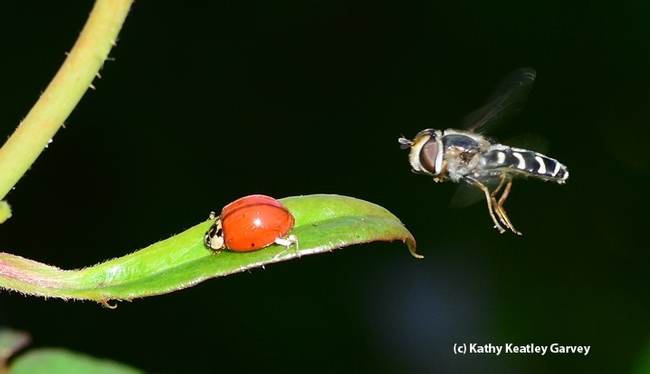
A syrphid fly, a female Scaeva pyrastri, hovers over an Asian lady beetle (Harmonia axyridis). (Photo by Kathy Keatley Garvey)
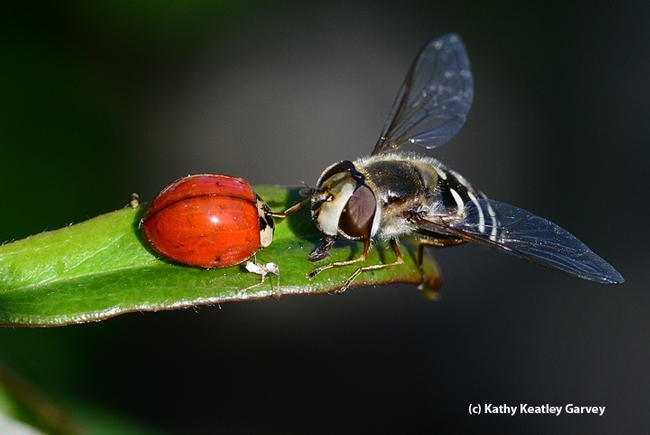
The syrphid fly licks honey dew from the head of the lady beetle, which had just feasted on the honeydew-producing aphids on a rose bush. (Photo by Kathy Keatley Garvey)
Behold: A Mexican Cactus Fly on a Mexican Sunflower
It's not often you see a Mexican cactus fly, Copestylum mexicanum, nectaring on a Mexican sunflower, Tithonia rotundifolia. At first glance, you may think the insect is a carpenter bee or bumble bee. Then you see it...
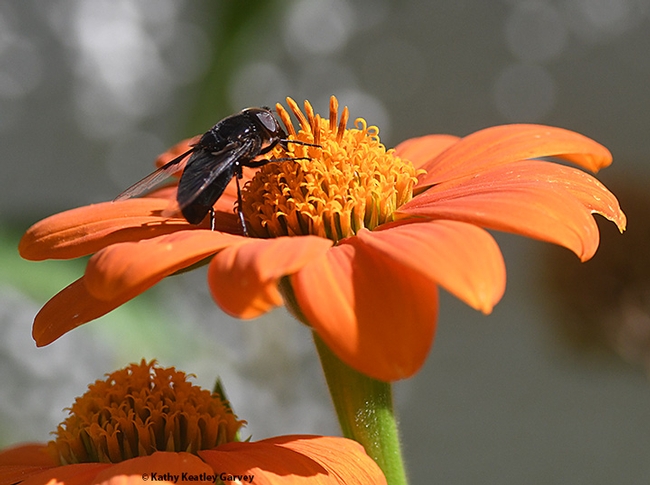
"Aah, nectar!" A Mexican cactus fly, Copestylum mexicanum, on a Mexican sunflower, Tithonia rotundifolia, in Vacaville. (Photo by Kathy Keatley Garvey)
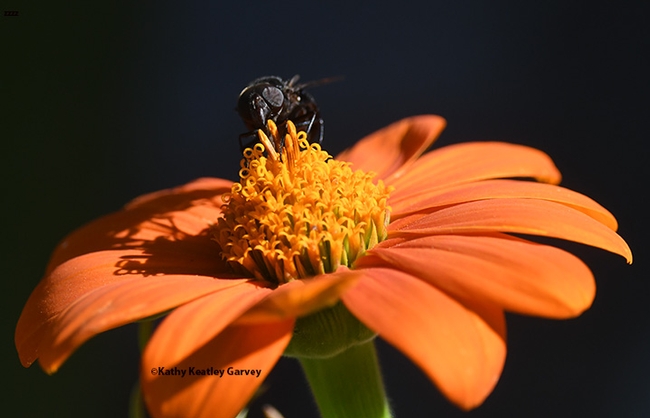
"Here's looking at you!" A Mexican cactus fly, Copestylum mexicanum, sips nectar from a Mexican sunflower, Tithonia rotundifolia, in Vacaville. (Photo by Kathy Keatley Garvey)
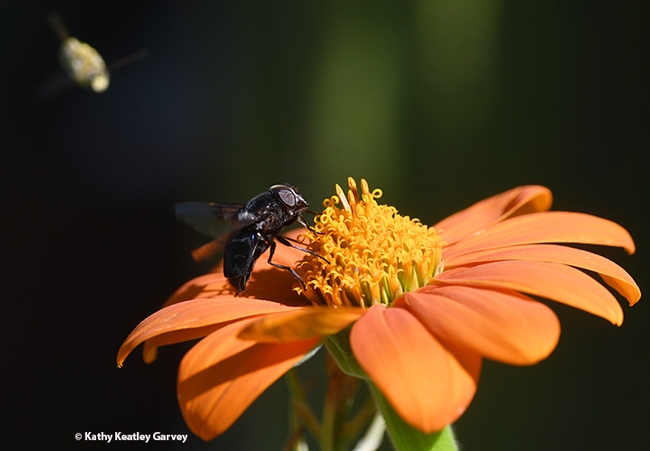
"My territory!" says a dive-bombing male longhorned bee, a Melissodes agilis, as it targets the Mexican cactus fly. (Photo by Kathy Keatley Garvey)
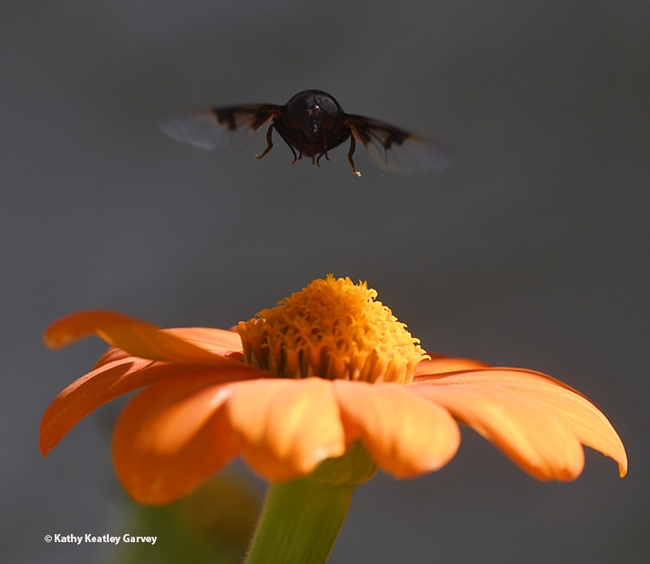
"Coming at ya!" A Mexican cactus fly sails over a Mexican sunflower. (Photo by Kathy Keatley Garvey
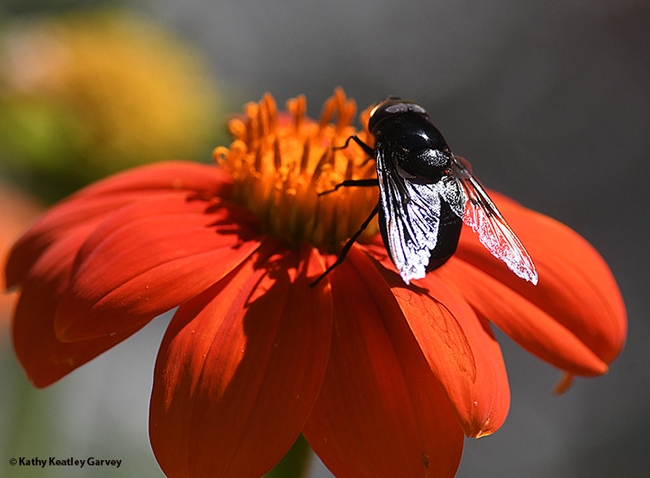
The wings of the Mexican cactus flower glisten in the morning sun. (Photo by Kathy Keatley Garvey)
Martin Hauser: 'The Curious Case of the Stingless Bees of Palo Alto'
The title is intriguing: "The Curious Case of the Stingless Bees of Palo Alto." Isn't it illegal to import stingless bees in the United States? It is. So what's going on? Members of the Pacific Coast Entomological Society and guests will find out when...
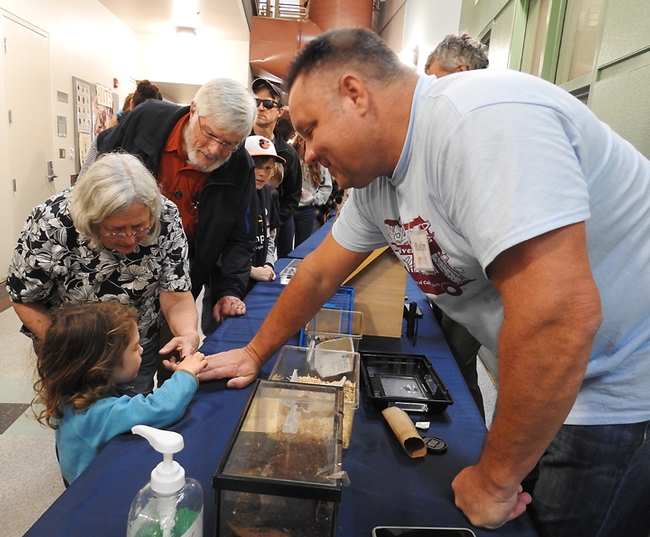
Martin Hauser of the California Department of Food and Agriculture will speak on stingless bees of Palo Alto at the Pacific Coast Entomological Society meeting on Feb. 27. Here he introduces Madagascar hissing cockroaches to Bohart Museum of Entomology guests on Feb. 15 during the UC Davis Biodiversity Museum Day. (Photo by Kathy Keatley Garvey)
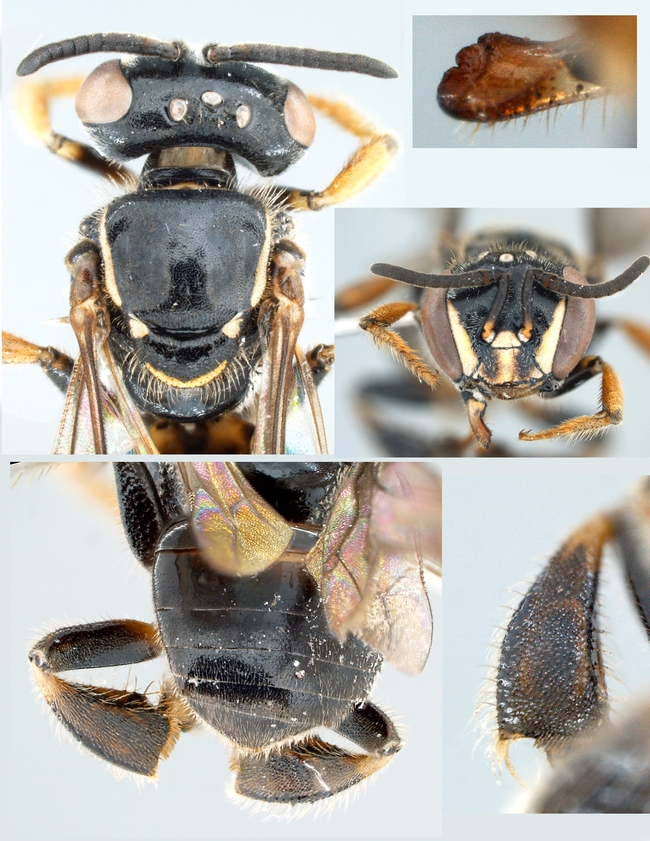
Plebeia sp (Images by Martin Hauser, California Department of Food and Agriculture)
A Fly, Oh, My!
A fly, oh, my! On the approval scale, they don't rank nearly as high as honey bees, but some are often mistaken for them. Take the Eristalis stipator, which belongs to the family Syrphidae, the hover flies. It's about the same size as a honey bee and...
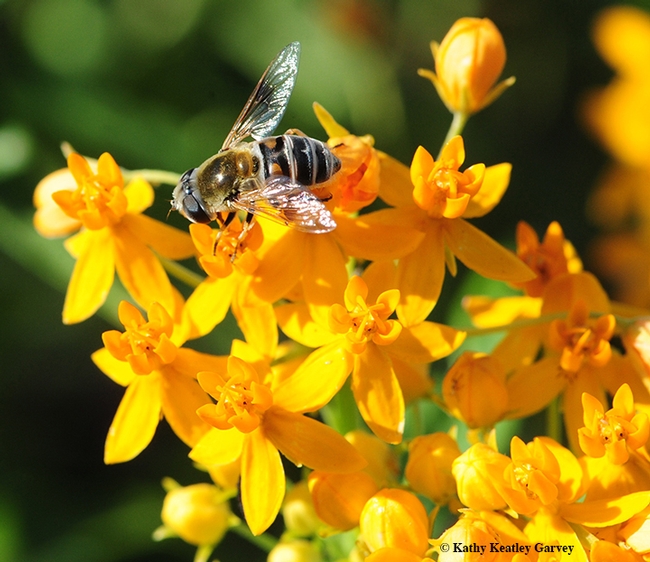
A female Eristalis stipator (as identified by Martin Hauser of the California Department of Food and Agriculture, foraging on tropical milkweed. (Photo by Kathy Keatley Garvey)
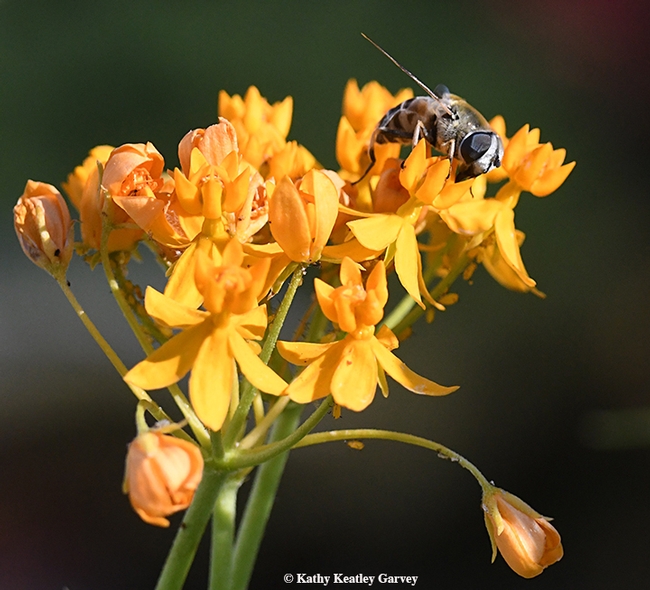
The female Eristalis stipator peers at the photographer. (Photo by Kathy Keatley Garvey)
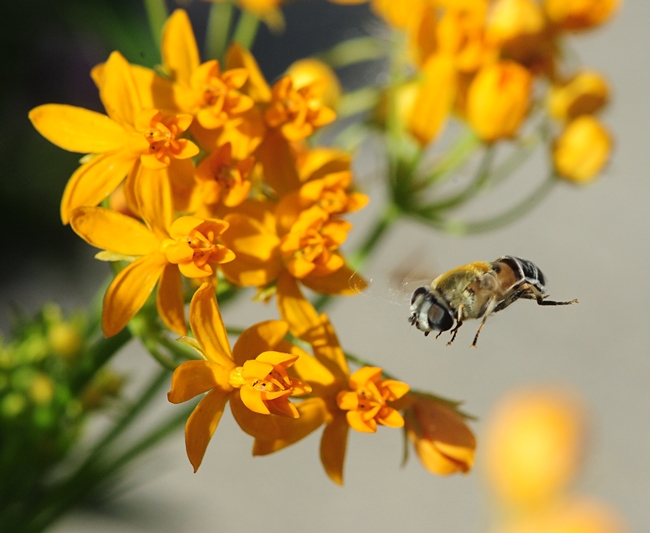
Eristalis stipator in flight. (Photo by Kathy Keatley Garvey)
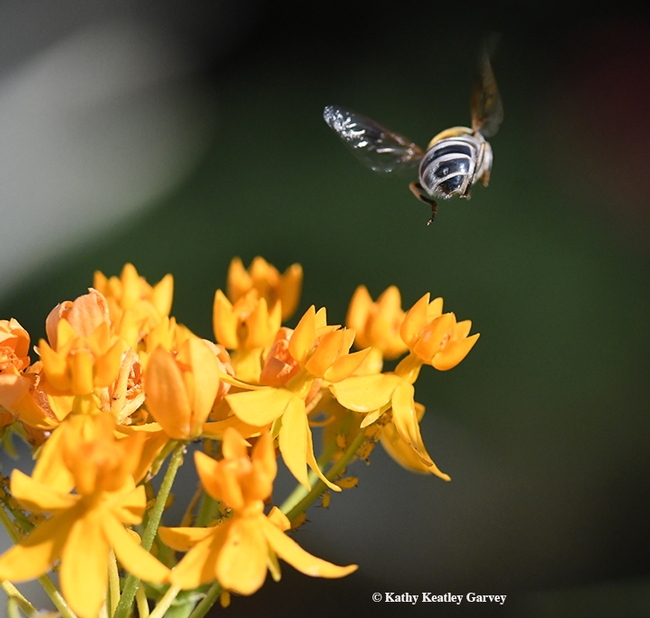
See you! Off flies Eristalis stipator, heading for another blossom. (Photo by Kathy Keatley Garvey)
Flies, Maggots and Forensic Entomologists at Bohart Museum on Sunday, July 9
Do you know the importance of maggots? Have you ever wanted to talk to a forensic entomologist? Ever wanted to create "maggot art" in a family friendly environment?Members of the North American Forensic Entomology Association (NAFEA) will be...
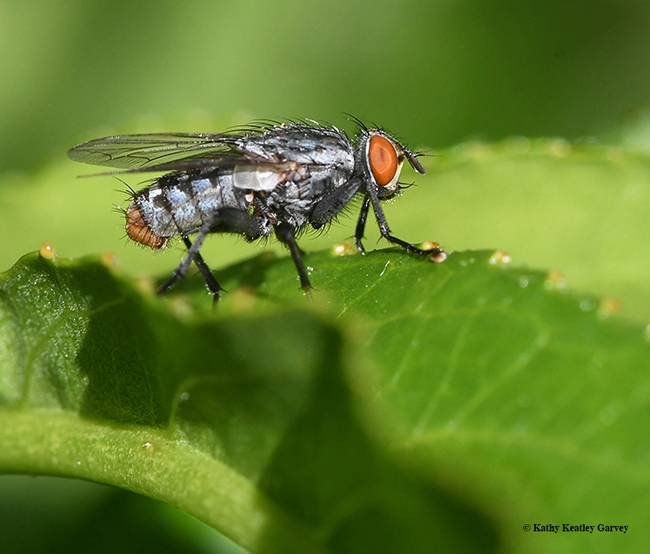
A male flesh fly (Sarcophagidae) "very likely genus Sarcophaga," according to senior insect biosystematist Martin Hauser of of the Plant Pest Diagnostics Branch, California Department of Food and Agriculture. Photo taken on a nectarine plant in Vacaville, Calif. (Photo by Kathy Keatley Garvey)
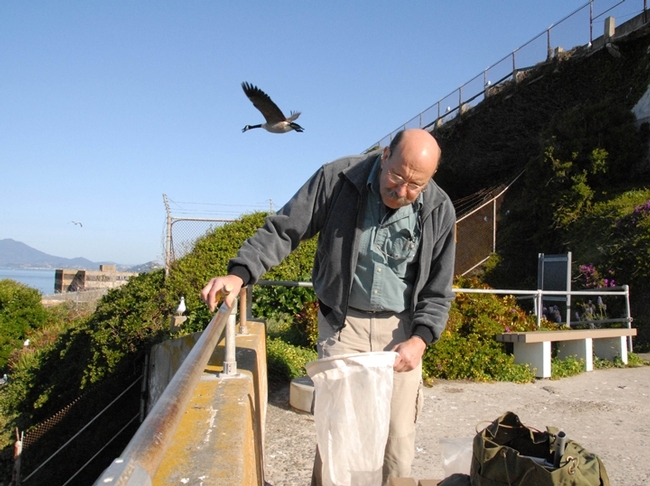
UC Davis forensic entomologist Robert Kimsey collecting flies on Alcatraz Island for a research project. (Photo by Kathy Keatley Garvey)
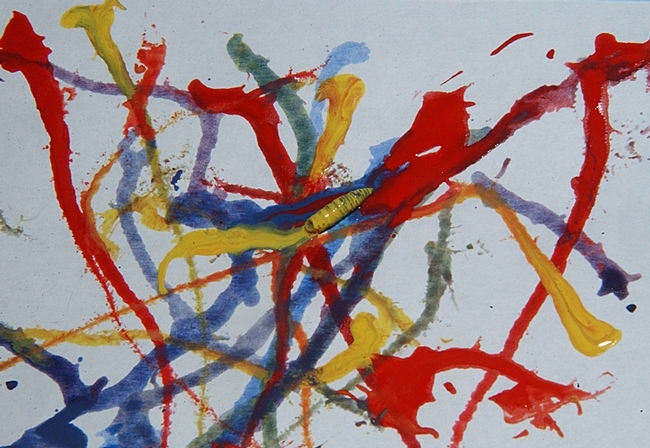
Maggot art is created by dipping a maggot in non-toxic, water-based paint and letting it crawl on canvas (paper). This is a popular activity at the campuswide UC Davis Picnic Day. (Photo by Kathy Keatley Garvey)

